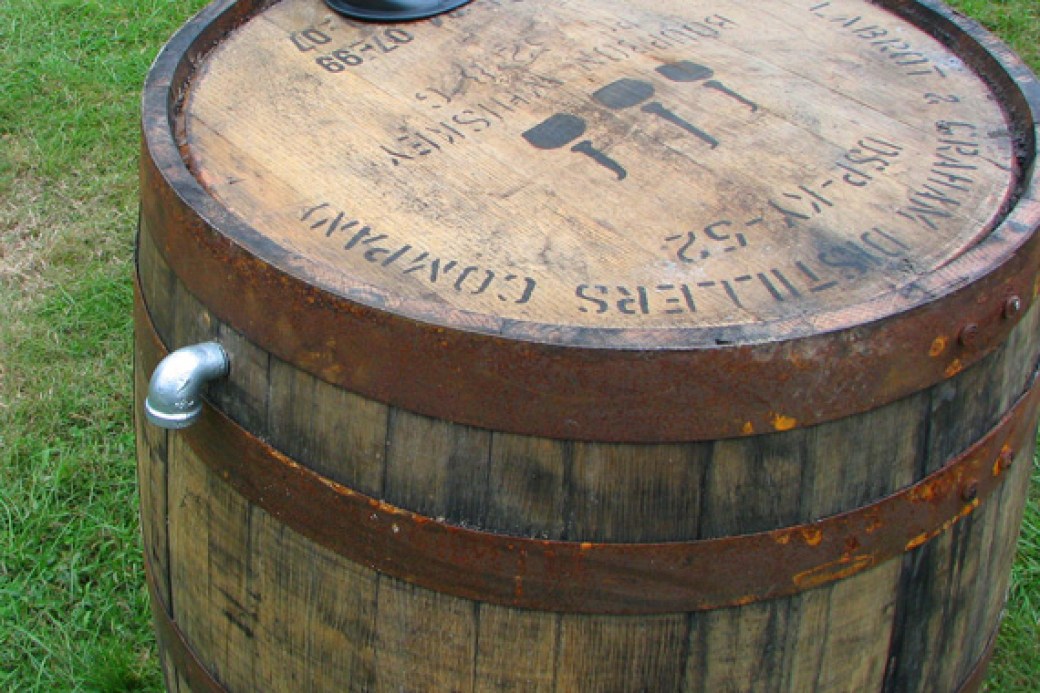Why pay to pour thousands of gallons of municipally treated tap water on your lawn and garden every summer if you can irrigate for free? That's the thinking behind rain barrels, which allow for garden water conservation, protect the environment, and help you save money.
Considering that an inch of rain dumps 500 gallons on the roof of a typical 2,000-square-foot house, it's possible in most parts of the country to collect more than enough runoff for basic landscape irrigation needs. A rain barrel will save about 1,300 gallons of water during the peak summer months, according to the U.S. Environmental Protection Agency.
In a national survey by DC Urban Gardeners, a rain barrel lowered water bills by about $35 a month in the summer. For as little as $100 for the barrel and downspout fittings, a rain-harvesting system can pay for itself in just a couple of seasons.
How Much Rain Can You Collect?
The first step is to figure out the potential runoff amount from your roof. Multiply your area's average annual rainfall in inches by the square footage of your roof. If you don't know exact roof area, it's fine to use the dimensions of your house's footprint. Then multiply that number by 0.623 -- the amount of water in gallons needed to fill one square foot of space to a depth of one inch. The result is the number of gallons you can harvest. (Keep in mind, though, that most rain barrel systems are set up to collect only a portion of that, depending on irrigation needs.)
If your main goal is to water flower beds or run soaker hoses during dry spells, one or two 55-gallon barrels will suffice. If you want to turn off the garden tap all together, you'll need multiple barrels or a cistern, a large tank that stores from 300 to 3,000 gallons. But cisterns cost considerably more (up to $2,500) and are more complicated to install and use, which makes them best suited for larger-scale rain harvesting systems that include such indoor uses as flushing toilets.
The Cost to Set Up a Rain Barrel System
Commercial barrels cost between $50 and $200, though you can also make one yourself from castoff food-grade containers. One couple linked together five 55-gallon syrup drums they bought for $10 apiece from the local Coca-Cola bottling plant. Their blog is an amusing and instructive rain-harvesting primer.
A typical system consisting of one or two barrels and off-the-shelf parts such as spigots, downspout extensions, mesh screens, and soaker hoses costs between $35 and $600. Cobbling it all together might take a weekend or two, but it's not rocket science. The Maryland Environmental Design Program offers easy step-by-step instructions for building your own barrel with about $15 worth of supplies.
Unfortunately, most rain barrels are not very handsome, and it's not always easy to camouflage them. Some people like the folksy wooden water barrel look, but generally speaking, the more water you're trying to capture, the bulkier the containers -- and the harder they are to make inconspicuous or tuck behind bushes, especially since they need to be located near a downspout on your house.
Safety Requirements and Caveats
Rain barrels work via gravity, so the barrel must be level, stable, and elevated to allow water to move out of the tank. You'll want two spigots, one at the bottom to connect a hose and the other about two-thirds of the way down to fit a watering can or bucket underneath. If you want to move water to a higher level, you'll have to add a small pump ($50 to $150, depending on type).
You'll also need to take a few other precautions for safety:
Covers and screens: A secure cover keeps children, pets, and wildlife out. Fine mesh screens prevent mosquitoes from breeding (a mosquito dunk, which kills mosquito larvae but is non-toxic to plants or other animals, is also not a bad idea) and block leaves and twigs from clogging the works.
Organic growth: Water that sits for days or weeks, especially in hot weather, can start to grow algae. Try adding a capful or two of bleach to the tank and letting it stand for a few days before using. If that doesn't work, you may have to drain and scrub the inside periodically.
Overflow: A 55-gallon barrel (or even two) will quickly fill up, especially during intense downpours. An overflow system that diverts water to a storm drain or into a moisture-tolerant part of the garden is essential.
Restricted uses: Although good for plants and perfectly fine for washing cars or garden tools, water that comes off the roof is far from pure. It may be contaminated with dust, insects, bird droppings, pine needles, pollen, and other pollutants. Be sure to clearly label all rainwater-supplied fixtures as "Non-potable -- Do Not Drink." It is also unsafe to mix fertilizer or garden chemicals in the barrel, even for garden use.
Benefits That Go Beyond Saving Money
Collecting rainwater has numerous benefits apart from low-cost irrigation. Free of chlorine and sodium, naturally soft rainwater is superior for plants. Capturing roof runoff also lowers the risk of flooding and reduces the burden on storm sewers and local watersheds.
That's one reason why a number of local and state governments are offering tax breaks or rebates for rainwater harvesting systems. A few, such as Washington, D.C., San Antonio, Texas, and San Jose, California, will even conduct a rainwater audit of your property, make recommendations, and implement rain barrels or other storm-water runoff strategies at a subsidized rate.
